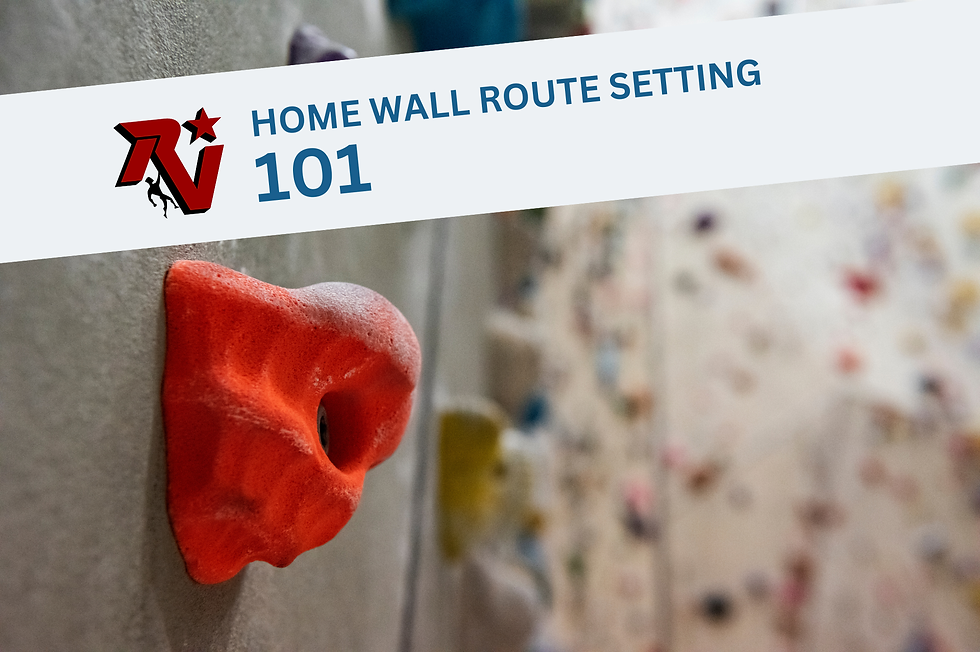Getting Back into Climbing Without Getting Injured
- Dovi Hirsch
- Feb 27, 2023
- 3 min read
by Christopher Schafenacker

Getting injured is every climber’s nightmare and yet you know what’s worse? Getting injured again as soon as you bounce back from some forced time off—which, unfortunately, is pretty common.
The ingredients for injury are simple: too much climbing with not enough rest. And while you’d think this would make injury easy to avoid, the reality is often the opposite. Climbing yourself into the dirt feels innocuous, even productive, and sessioning as much as your body will allow is, like, what everyone does, right? When you’re bouncing back from injury, it’s easy to feel like you need to play catch-up with your homies, leading you to go even harder and rest even less.
All of this is bad practice but everyone (including the author) does it and this makes it seem normal, even necessary. How are you supposed to ever get as strong as Ondra if you don’t train like Ondra, right?
Well, first, neither you, me, nor anyone within 100 miles of you is ever going to get as strong as Ondra (unless you somehow happen to be in Arco, Italy as you read this), and second, the only way you’ll ever get close is to prioritize resting hard as much as you do training hard—especially if you’re bouncing back from injury.
How to Rest Your Way (Back) to Higher Grades
Ok, so the idea that only Ondra should train like Ondra is a little misleading. No, you shouldn’t put in multiple three-hour sessions per day. But yes, you should rewrite the meaning of “tryhard” when you train.
It’s easy to assume that this means grinding your body to a pulp each with every visit to the gym and yet the opposite is true. Trying hard doesn’t mean doing as much as your body will allow so much as doing as well as it will allow. As soon as the quality of your training dips, it’s time to rest—no matter who you are.
When you watch Ondra or any other pro train, it might look like they’re running themselves ragged as they heap campus session upon hangboard session upon spraywall protocol but this isn’t true. Their workload capacity is simply so far beyond yours or mine that they’re able to do all of this at near max effort when a mere mortal would be crushed by doing even half of what they do.
Resting hard means both stopping as soon as the quality of your climbing dips and not starting again until you’re fully recovered. Fail to do this and your body will take matters into its own hands by making some part hurt so badly that resting won’t be an option.
Featured Climbing Training Gear
Maverick: The on-the-go, bring it anywhere hangboard. On a family road trip to keep your fingers in shape. We like to bring this to the crag with us to keep our fingers warm—without losing skin on mediocre warm-ups—at that steep, thuggy sport crag.
The Rocket Wall: Available in 6’ and 8’ widths, it’s been tough for us to keep up with the demand for this innovative home climbing wall solution. Slightly overhanging, the Rocket Wall is big enough to set routes on, or to build a systems board.
The Rock-Stah: Our handcrafted version of a traditional hangboard, with curving crimp rails to help alleviate unnecessary strain on your pulleys. Because ain’t no one got time for a finger injury…
The Rocketeer Wall: our free-standing adjustable solution for those who can’t mount a hangboard anywhere in their home or apartment—or who are limited on space. The Rocketeer gives climbers the additional option to set specific climbing holds. Recreate the crux holds of your proj and get ready to send, bruh.











Comments